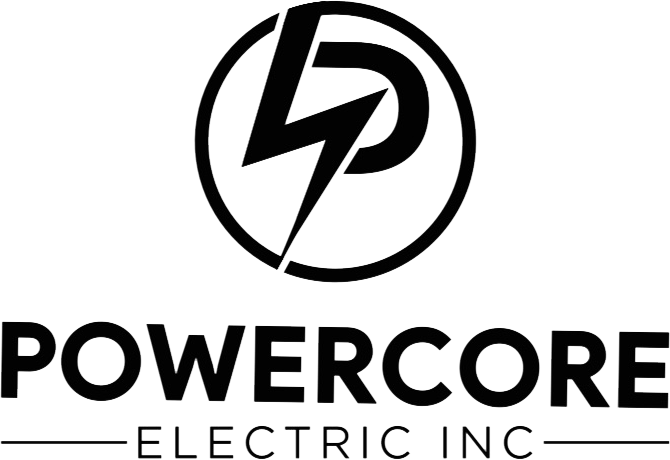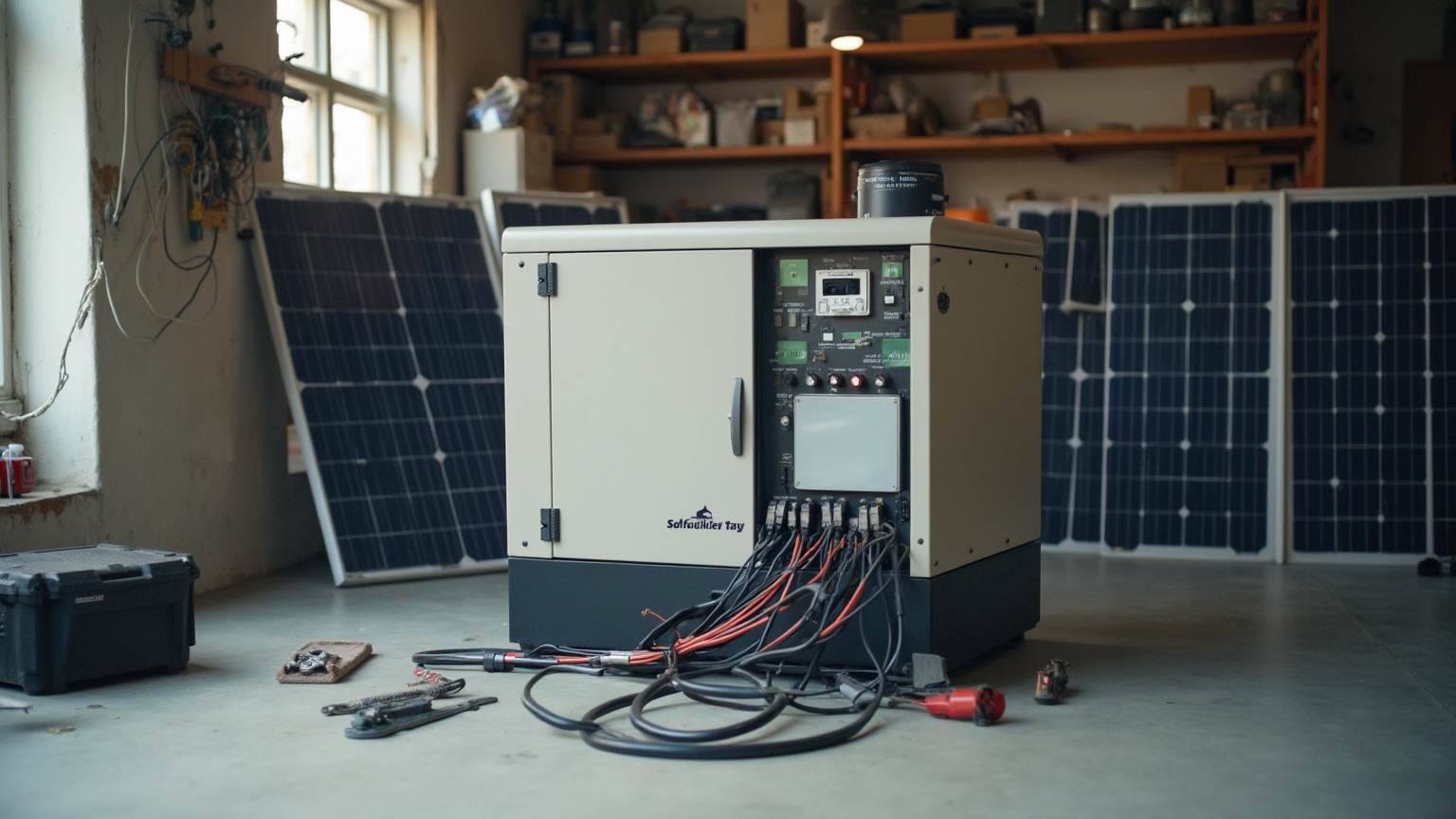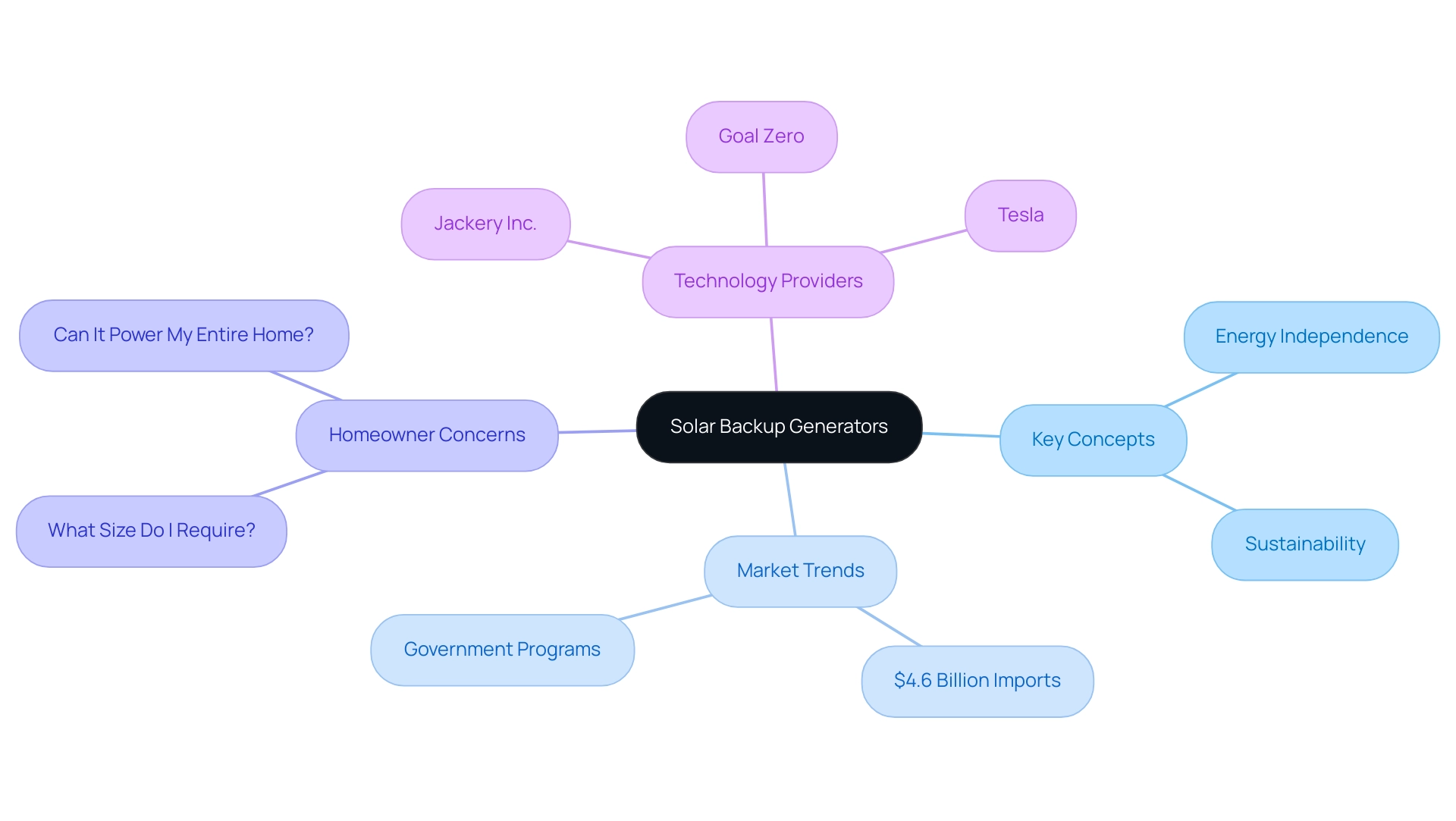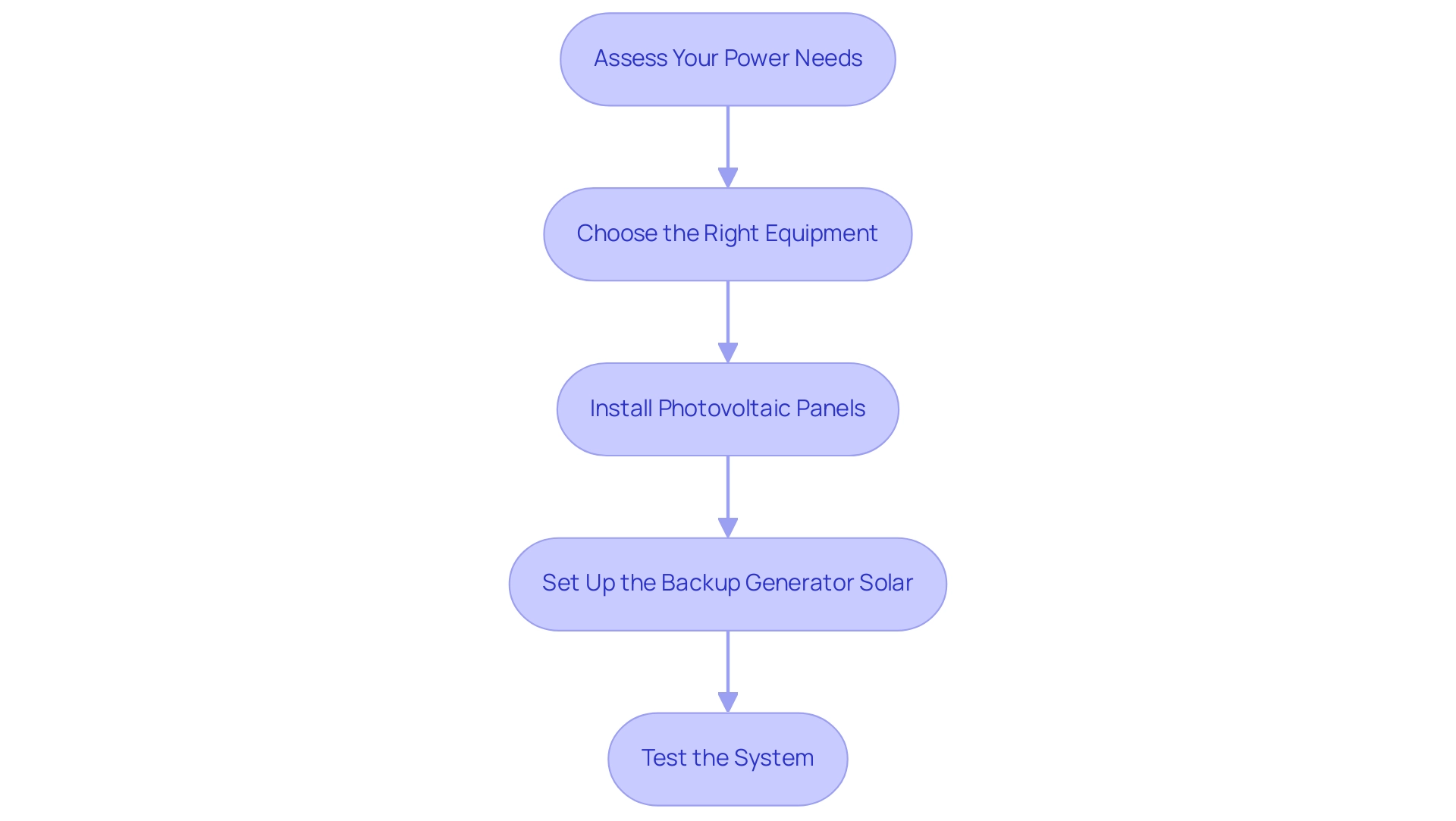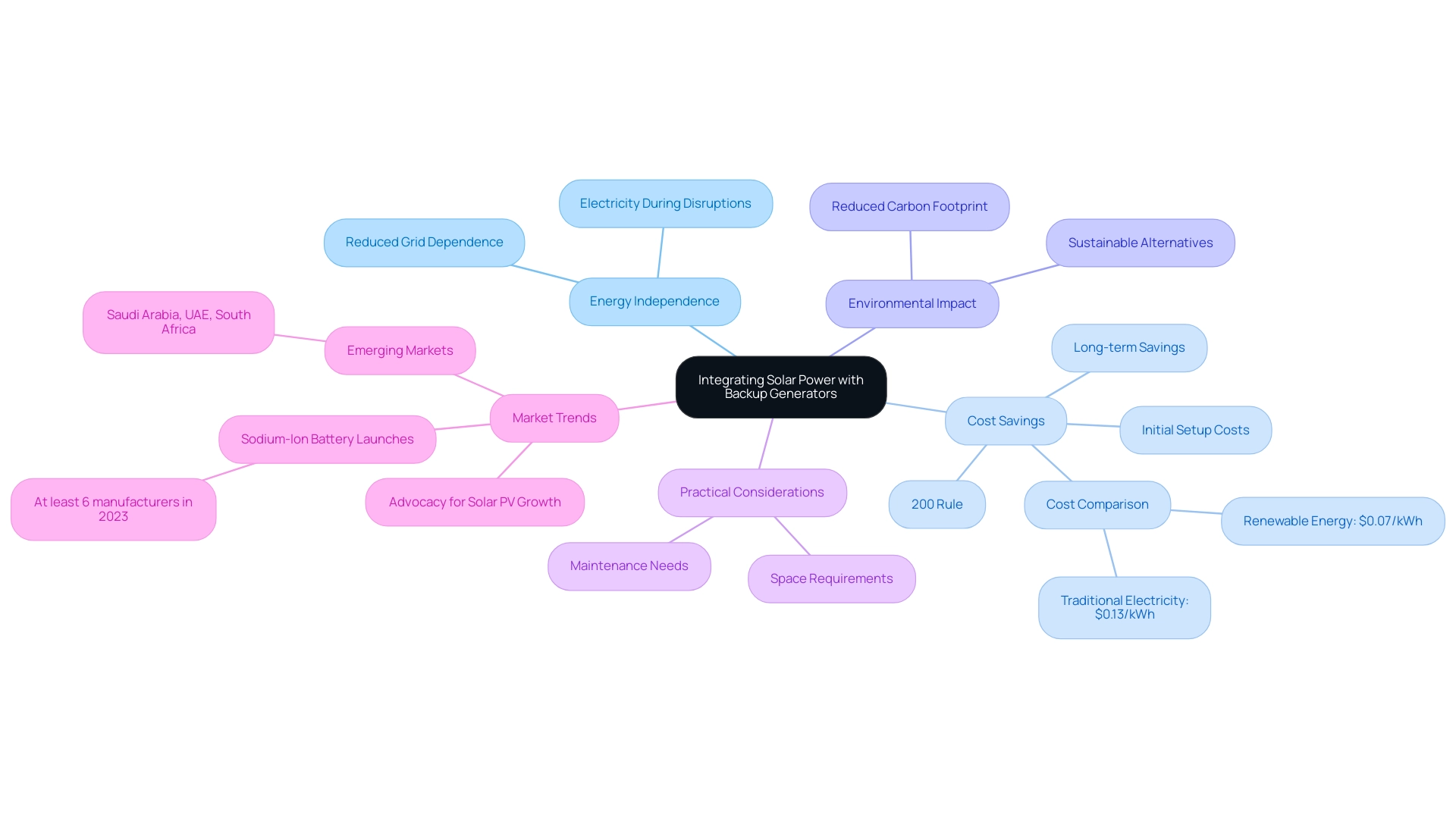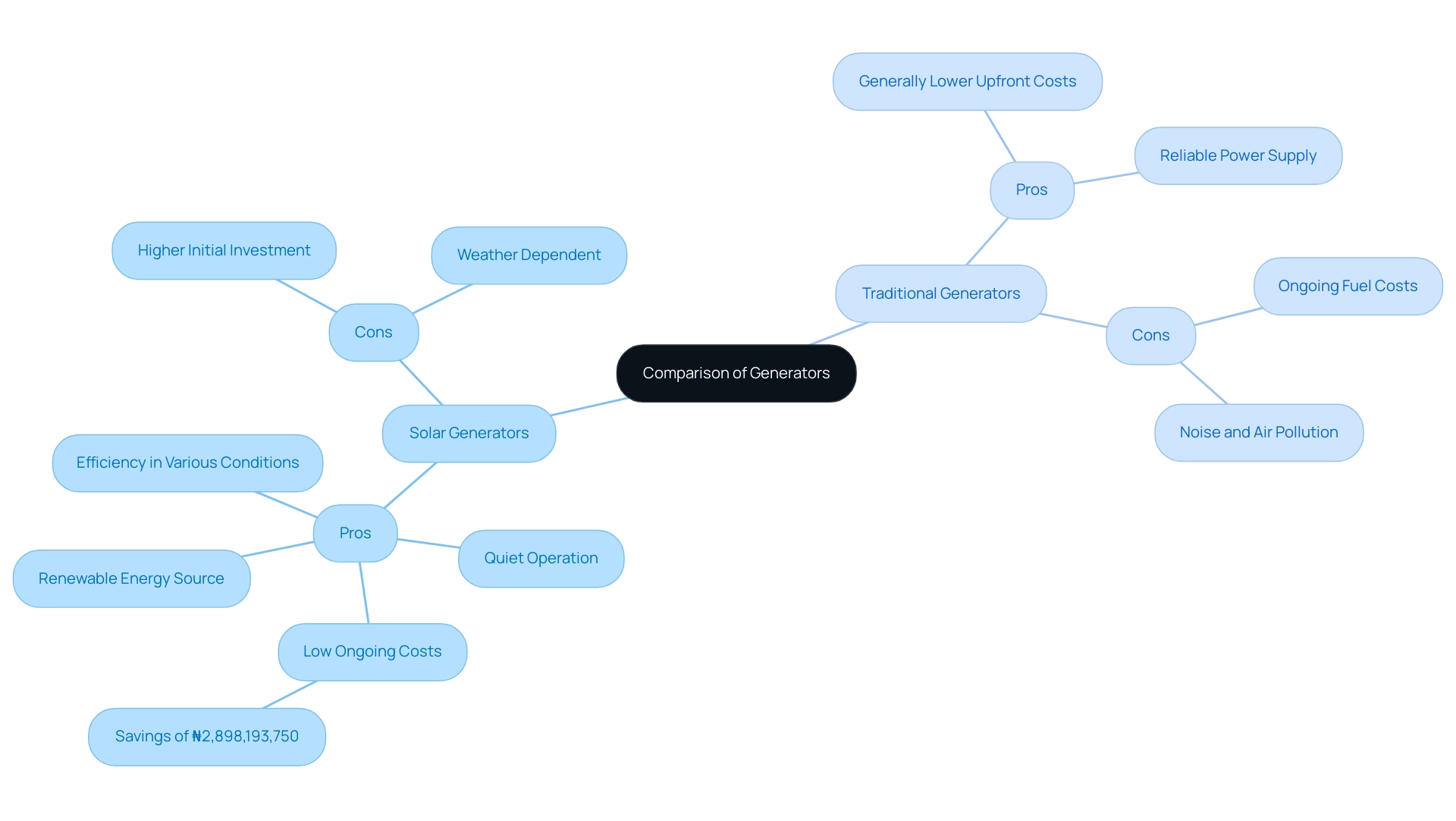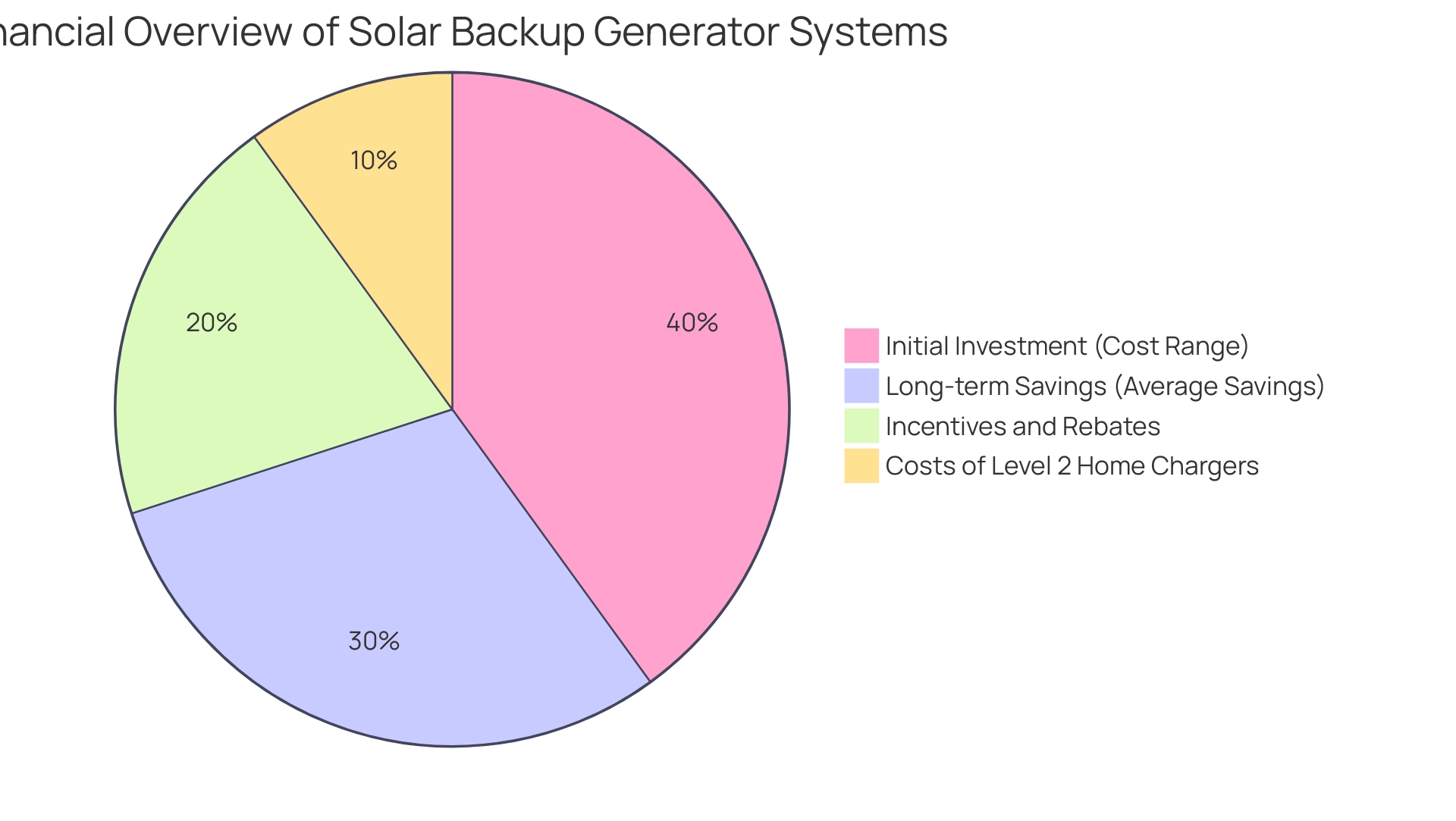Overview
The article focuses on understanding backup generator solar systems, detailing their components, benefits, and setup processes. It emphasizes that these systems provide energy independence and cost savings through renewable energy, supported by data on installation costs, potential savings on electricity bills, and the increasing market for solar technology.
Introduction
The rise of solar backup generators marks a transformative shift in how homeowners approach energy independence and sustainability. As power outages become more frequent and the desire for eco-friendly alternatives grows, these innovative systems combine solar energy generation with reliable battery storage, ensuring that electricity is available even when the grid fails.
With many homeowners asking critical questions about:
- Sizing
- Efficiency
- Cost-effectiveness
This guide delves into the essentials of solar backup generators, from selecting the right equipment to understanding the long-term savings and environmental benefits they offer. As the solar market continues to expand, embracing this technology not only enhances personal resilience but also contributes to a greener future.
Introduction to Solar Backup Generators: Key Concepts and FAQs
A backup generator solar system serves as an excellent solution that combines renewable energy production with battery storage, ensuring you have electricity even during outages or when grid power is inaccessible. These systems, such as backup generator solar, are becoming increasingly popular among eco-conscious homeowners who wish to enhance their energy independence and sustainability. If you’re curious about typical inquiries such as:
- What size backup power source do I require?
- Can it power my entire home?
You’re not alone! Comprehending the average dimensions of backup generator solar systems for residences, which generally spans from 5 kW to 20 kW, is vital in making informed choices regarding your power requirements.
Moreover, with the renewable energy equipment market booming—over $4.6 billion worth of imports in the U.S. alone this year—it’s clear that more homeowners are embracing this technology. This trend is further supported by government programs that make renewable energy more accessible and affordable. According to the Australian Energy Market Operator (AEMO), integrating rooftop photovoltaic systems with storage is key to stabilizing the grid, which underscores the importance of a backup generator solar.
Furthermore, firms such as Jackery Inc. and Goal Zero are at the forefront of making renewable energy more accessible, highlighting the competitive environment and advancements in energy technology. Additionally, Tesla home chargers play a crucial role in this ecosystem, as they enable homeowners to charge their electric vehicles using renewable energy, enhancing overall energy efficiency. By familiarizing yourself with these key concepts, including the best solar battery choices and eco-friendly solar panel cleaning services, you can confidently navigate your path toward backup energy solutions that align with your eco-friendly values.
Step-by-Step Guide to Setting Up Your Solar Backup Generator System
-
Assess Your Power Needs: Begin by identifying the essential appliances and systems you wish to keep operational during an outage. A useful calculator can assist you in estimating your needs accurately. Remember, calculations might not factor in variables like shadows, dust, or snow, which can affect energy production.
-
Choose the Right Equipment: Picking a backup generator solar that fulfills your energy needs is essential. Look for options with sufficient battery capacity (at least 10 kWh) and the right inverter size (around 5,000 to 7,500 watts) to ensure smooth operation. For off-grid homes, a generator in the range of 6,500 watts strikes an optimal balance between power capacity and fuel efficiency. Popular models include the Goal Zero Yeti 6000X for its portability and the Generac GP8000E for its reliability.
-
Install Photovoltaic Panels: If you haven’t set up photovoltaic panels yet, position them in a location that gets the most sunlight exposure. Ensure they are securely mounted and correctly connected to the inverter for optimal power capture.
Connect the Battery System: Set up a battery storage system to capture and store energy generated by your solar panels. Look for batteries with high cycle life (around 3,000 cycles) and efficiency (over 90%). This guarantees that you have power available when you need it most, especially during power outages or adverse weather conditions. The Tesla Powerwall is a leading choice for its efficiency and smart features.
-
Set Up the Backup Generator Solar: Connect your backup generator solar to your home’s electrical system, following the manufacturer’s instructions and local codes. It’s important to choose the appropriate size of the power source; most homes can effectively function with a unit between 5,000 to 7,500 watts. Opt for one that exceeds your calculated needs by about 20% for added reliability.
-
Test the System: Once everything is connected, it’s time to test your backup generator solar system. Run through different scenarios to ensure everything operates as expected, so you’re fully prepared for an outage. As Hitechluddite suggests, if you want to delve deeper, you can download hourly data to see how individual average days behave—this data can be instrumental in fine-tuning your system for optimal performance. Furthermore, take into account findings from a recent case study where a property owner assessing a larger photovoltaic panel installation along with geothermal heating highlighted the significance of reviewing all backup system alternatives for efficiency. One user remarked, ‘Since setting up my backup system, I’ve felt much more secure during storms, knowing I have dependable energy when it matters most.
Integrating Solar Power with Backup Generators: Benefits and Considerations
Combining renewable sources with a backup generator solar offers numerous advantages that can change your home’s electricity experience. Here’s what you can look forward to:
- Energy Independence: Enjoy the freedom of reducing your dependence on the grid. With a renewable energy system in place, you’ll have electricity when you require it most, even during disruptions.
- Cost Savings: By utilizing clean energy, you can greatly reduce your electricity expenses. Utilizing renewable energy not only decreases dependence on fuel for conventional machines but also provides long-term savings in comparison to standard electricity expenses. The 200% rule can assist homeowners in maximizing their panel efficiency, ensuring you gain even more from your investment. For example, a case study of the Johnson family demonstrates how they lowered their utility expenses by 40% after installing a generator system that complies with the 200% rule.
- Environmental Impact: Make a positive contribution to the planet by reducing your carbon footprint with renewable power. This transition towards photovoltaic options is becoming progressively significant as eco-aware homeowners pursue sustainable alternatives to conventional power sources.
However, it’s crucial to evaluate these advantages against certain practical factors. Homeowners should account for initial setup costs, which can vary based on system size and installation. Comprehending residential photovoltaic panel sizing is essential, as it not only impacts installation expenses but also your capacity to utilize the full advantages of renewable power.
Additionally, consider the space requirements for photovoltaic panels and the maintenance needs to keep everything running smoothly. A detailed cost comparison shows that while traditional electricity can cost around $0.13 per kWh, renewable energy can reduce this to approximately $0.07 per kWh over time, making it a more economical choice.
With at least six manufacturers gearing up to launch sodium-ion batteries this year, the landscape of renewable energy is evolving rapidly, presenting exciting opportunities for those looking to invest in energy independence. This shift highlights the importance of adapting to market trends, as the winners in the Battery Energy Storage System (BESS) market will be those who identify and seize these opportunities. Moreover, developing economies in areas such as Saudi Arabia, UAE, and South Africa are starting to investigate renewable energy technologies, suggesting considerable growth potential in the sector.
As various global organizations advocate for photovoltaic expansion, now is a perfect opportunity to examine how combining renewable energy with a backup generator solar can provide benefits for both your home and the environment.
Comparing Solar Generators and Traditional Generators: Pros and Cons
Pros and Cons of Solar Generators
Pros:
- Renewable Energy Source: Solar generators harness sunlight, significantly reducing carbon emissions and promoting a cleaner environment. This aligns with eco-conscious values and the push for sustainable living.
- Low Ongoing Costs: Once installed, the maintenance and operational costs are minimal, making it a cost-effective solution over time. Research shows that photovoltaic systems can result in savings of up to ₦2,898,193,750 compared to diesel alternatives, particularly significant considering the elevated fuel expenses related to conventional power sources.
- Quiet Operation: Unlike their gas-powered equivalents, photovoltaic systems function silently, ensuring a peaceful home environment.
- Efficiency in Various Conditions: Solar generators can maintain efficiency levels even on cloudy days, although performance may vary. Homeowners can utilize resources such as the NREL’s online calculator to assess their specific energy potential based on local weather patterns.
Cons:
- Higher Initial Investment: The upfront costs can be daunting for some homeowners, but considering long-term savings, this investment is often justified. It’s essential to view this as a step toward sustainable power independence.
- Weather Dependent: Performance can fluctuate based on weather conditions and the amount of direct sunlight. Homeowners should evaluate their location’s solar potential, utilizing tools like the NREL’s online calculator to make informed decisions. Furthermore, grasping the wider implications of renewable energy investments is vital, especially in tackling supply challenges in areas such as Nigeria.
Pros and Cons of Traditional Generators
Pros:
- Generally Lower Upfront Costs: Traditional generators typically have a lower initial price point, which can appeal to budget-conscious homeowners.
- Reliable Power Supply: They provide consistent power generation unaffected by weather, making them a dependable choice during emergencies.
Cons:
- Ongoing Fuel Costs: Traditional generators incur fuel expenses that can accumulate over time, impacting overall affordability.
- Noise and Air Pollution: These generators tend to be noisy and emit harmful fumes, negatively affecting air quality and home comfort.
Ultimately, homeowners should assess their unique needs, including budget, environmental impact, and specific energy requirements, to determine the best backup energy solution. As Hachimenum Nyebuchi Amadi noted, > “The adoption of renewable resources as a power source for GSM stations in Nigeria is therefore strongly advocated to make the industry globally competitive.” This underscores the importance of embracing renewable energy options today.
Homeowners can also refer to case studies, such as the Potential Assessment, to understand how to evaluate their energy potential using historical data and available tools. For example, case studies from areas with comparable climates can offer insights into the effectiveness of photovoltaic systems during different weather conditions, including overcast days.
Understanding the Costs and Savings of Solar Backup Generator Systems
When it comes to backup generator solar systems, costs can vary significantly based on your chosen equipment, installation specifics, and the financial incentives available in your area. Generally speaking, eco-conscious homeowners can expect to invest between $5,000 and $15,000 for a robust system that fits their needs. But don’t let those figures intimidate you; the long-term savings can be quite impressive.
- Reduced Energy Bills: By utilizing renewable energy, you can significantly cut down your monthly electricity expenses. For instance, homeowners in Wyoming typically save around $5,916 over 25 years thanks to renewable energy. States like Texas and Florida also provide lower average costs per watt at $2.04 and $2.11 respectively, making energy systems more accessible than ever.
- Incentives and Rebates: Many sunny states, including California, offer financial incentives like tax credits and rebates that can help lower your installation costs. These incentives make adopting renewable energy not just an eco-friendly choice, but also a savvy financial decision. However, it’s worth noting that California’s renewable energy market faced some hurdles in 2023, with 69% of installers reporting decreased sales, reflecting the challenging landscape in the state’s energy industry.
- Costs of Level 2 Home Chargers: In addition to renewable systems, homeowners should consider the costs of Level 2 home chargers for electric vehicles, which typically range from $400 to $1,200, excluding installation fees. This investment can further improve your efficiency and offer convenience for EV owners.
- Long-Term Savings: Once your photovoltaic system is up and running, operational costs are typically low, meaning your investment can really pay off over time. With almost 1.5 gigawatts of power storage capacity installed alongside photovoltaic systems in 2023—a significant 50% rise from the prior year—it’s clear that many are benefiting from the advantages of these solutions. In fact, North America boasts a 39.7% share of the generator market, valued at USD 2.5 billion, underlining the growth and importance of this industry.
As you navigate the financial landscape of backup generator solar systems, keep these factors in mind. The goal is to find a solution that not only fits your budget today but also provides lasting savings for years to come. For Long Beach renters, exploring local solar programs and incentives can further enhance your transition to renewable energy.
Conclusion
Embracing solar backup generators represents a significant step toward energy independence and sustainability for homeowners. These systems not only provide reliable power during outages but also promote the use of renewable energy, reducing dependence on the grid. Understanding critical aspects such as sizing, efficiency, and cost-effectiveness is essential for making informed decisions about solar backup solutions.
The benefits of integrating solar power with backup generators are substantial. Homeowners can enjoy considerable cost savings on energy bills, contribute positively to the environment, and enhance their resilience against power outages. While the initial investment may seem daunting, the long-term savings and available incentives can make this a financially sound choice. By selecting the right equipment and understanding the installation process, homeowners can confidently navigate the path to sustainable energy solutions.
As the solar market continues to evolve, so do the opportunities for homeowners to invest in their energy future. With advancements in technology and growing support for renewable energy, now is the ideal time to explore how solar backup generators can transform not only individual homes but also contribute to a greener planet. Taking this step not only secures personal energy needs but also aligns with a broader movement towards a sustainable and eco-friendly lifestyle.
